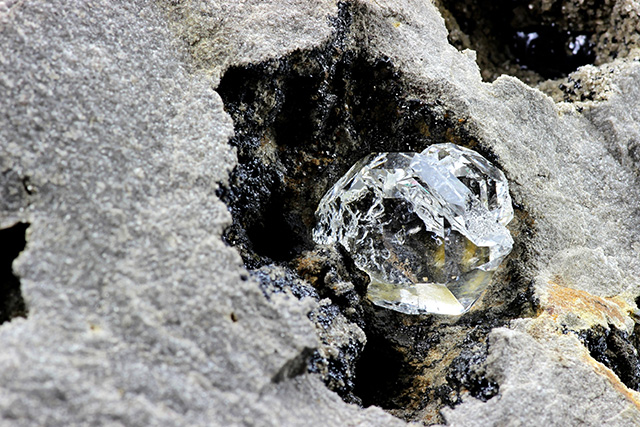Scientists can track water deep underground by studying diamond impurities
07/24/2018 / By Edsel Cook

Crystallized water impurities in diamonds offer the first solid proof that there are pockets of liquid water located deep in the mantle of the Earth, according to a report published in ScienceDaily. A research team from the University of Nevada, Las Vegas (UNLV) found a rare kind of crystallized water called Ice-VII inside diamonds that had come from the interior of the planet.
Impurities found in gemstones and other types of minerals are called inclusions. These lower the market value of diamonds when they are turned into jewels, but for UNLV geoscientist Oliver Tschauner and his fellow researchers, inclusions like these are priceless because they provide insights about the internal processes of the Earth.
In the study, Tschauner’s team investigated impure diamonds from Botswana, China, and South Africa. These diamonds originated from the transition zone, the part of the mantle between 255 and 410 miles (410 to 660 km) depth. Upon examination, the team found Ice-VII inclusions in diamond samples from all three countries.
“This shows that this is a global phenomenon,” Tschauner said.
Rare crystallized water finally found in natural conditions
Ice-VII is a high-pressure form of water that requires immense heat and pressure. Before it was found in diamonds, it was first identified in earlier laboratory tests during intense pressure testing of materials. The International Mineralogical Association currently recognizes Ice-VII as a mineral.
The current study marks the first natural occurrence of Ice-VII from the deep mantle. Tschauner’s team speculated that the diamonds in their study were created in the Earth’s mantle, a rocky expanse of silicate minerals where temperatures exceeded 1,000 degrees Fahrenheit. The mantle also accounts for more than 80 percent of the volume of the planet, and it contains silicate minerals like quartz, as well as aluminum, calcium, iron, and other minerals. (Related: Natural, inexpensive AND more effective: Phosphate rock confirmed to be an effective fertilizer for acidic soils.)
There’s also water in there, somewhere, in the form of Ice-VII. And it’s liquid water, to boot. The stable minerals in the transition zone of the mantle can hold a lot of water. The researchers theorize that pockets of Ice-VII can be found at the edge of the region, formed when water that was chemically-bound to molten rock got released while the magma is flowing in and out of the region.
According to Tschauner, Ice-VII takes the form of a solid inside the hard confines of the diamond that has captured it. But the crystallized water occurs as a liquid in the hot and highly pressurized environment of the mantle.
“These discoveries are important in understanding that water-rich regions in the Earth’s interior can play a role in the global water budget and the movement of heat-generating radioactive elements,” he remarks.
The presence of Ice-VII impurities in diamonds can indicate the specific regions in the mantle where large amounts of liquid water can be found. Some of these waters are theorized to eventually make their way upwards towards the crust, where they can be accessed by humans.
A better understanding of the Earth’s internals
Tschauner believes this discovery will lead to more accurate depictions of the internal processes taking place deep within the Earth. In particular, researchers could find out where geothermal heat is generated under the crust and how that heat is created. “It’s another piece of the puzzle in understanding how our planet works,” he remarked.
Tschauner freely admits that his team came across this discovery by accident. They were looking for a different impurity in the diamonds.
“We were looking for carbon dioxide. We’re still looking for it, actually,” he says.
Find out about other scientific breakthroughs at Scientific.news.
Sources include:
Tagged Under: crystallized water, diamonds, Ice-VII, inclusions, lasers, mantle, research, science, underground water




















